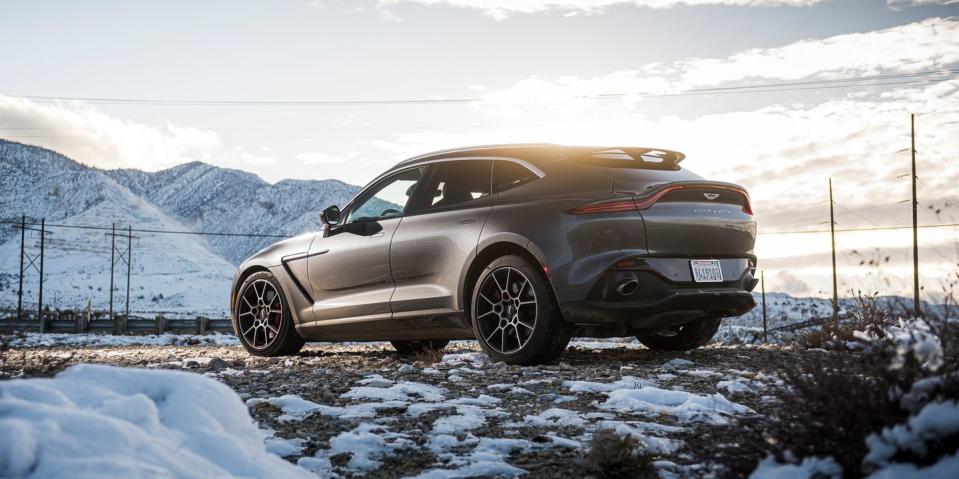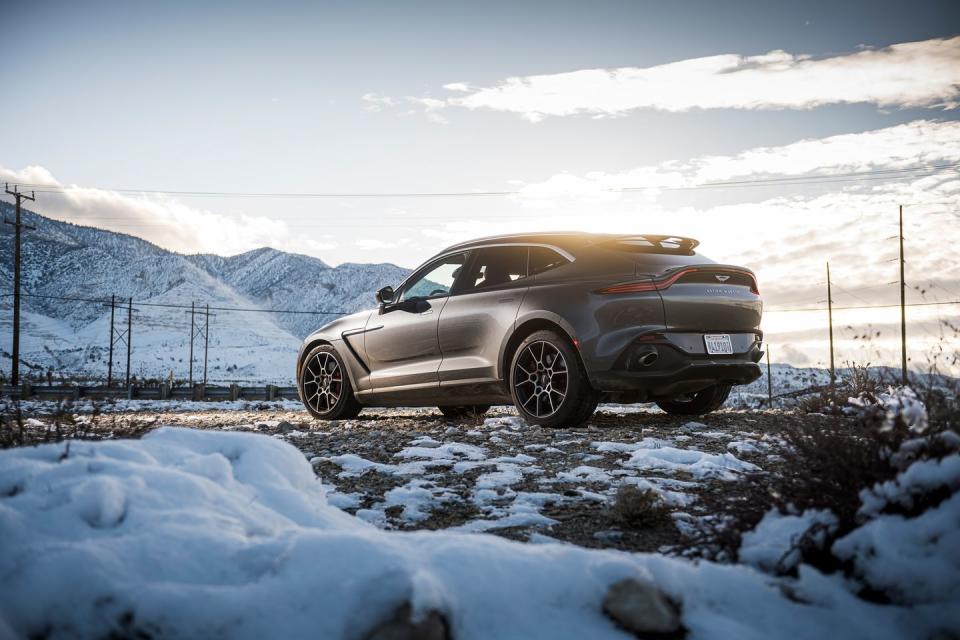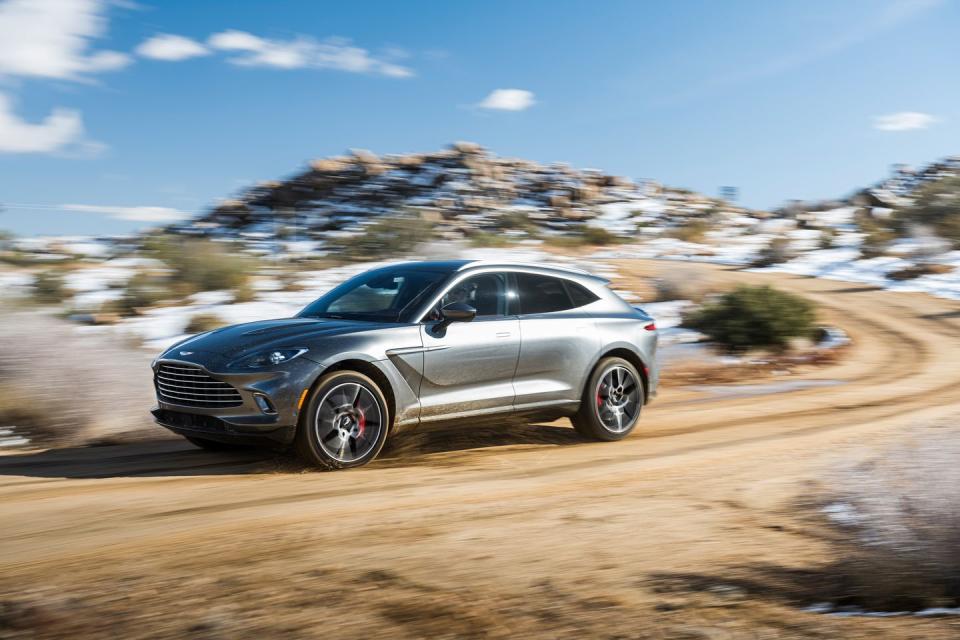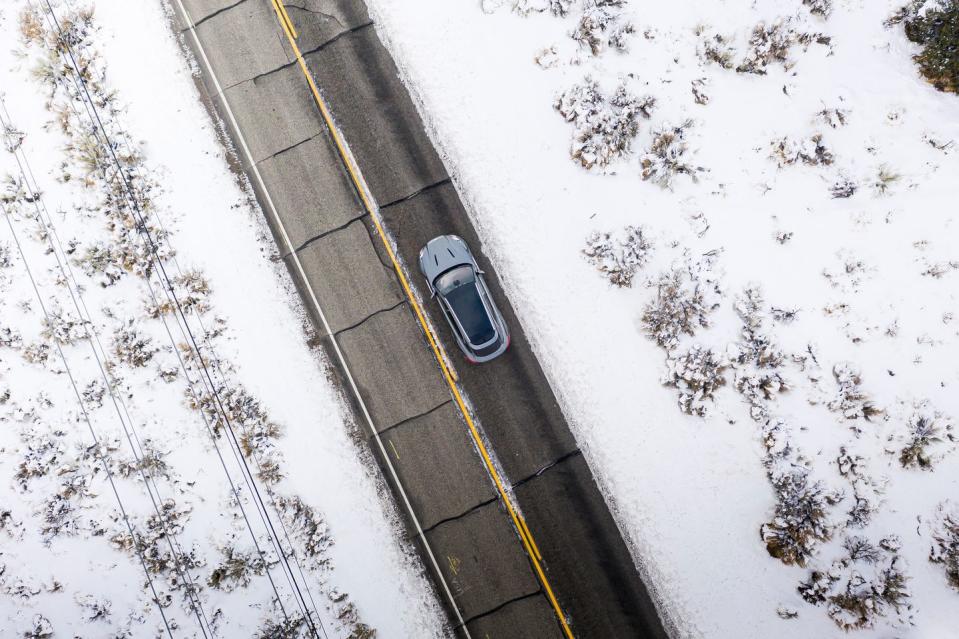Tested: 2021 Aston Martin DBX Looks to Right Aston's Ship


From the April 2021 issue of Car and Driver.
Aston Martin is building an SUV. That statement would likely confuse and upset past owners of the 108-year-old British company. Utility is anathema to an Aston Martin, they'd scoff. They'd wax poetic about beauty, grace, passion, and performance, then casually slip in that the company has a Royal Warrant of Appointment from His Royal Highness Prince Charles Philip Arthur George, Prince of Wales, Knight of the Garter . . . Knight Grand Cross of the Order of the Bath, Order of Merit . . . Earl of Chester, Duke of Cornwall, Duke of Rothesay, Earl of Carrick, Baron of Renfrew, Lord of the Isles, and Prince and Great Steward of Scotland.
Far less impressive than that title is the storied brand's seven bankruptcies. Keeping the HMS Aston away from an eighth iceberg is why the new DBX SUV exists: A sports-car company, particularly one as tiny as Aston Martin, is slopping the trough for SUV-hungry customers. It's a proven gambit that has secured the fortunes of Bentley, Porsche, and Lamborghini. Last year Aston actually came perilously close to another bankruptcy. Just before the DBX entered production, the company nearly ran out of money, sending the stock price to an ominous low of $6.66. A massive cash infusion from investors kept the brand afloat until the DBX could roll into showrooms.

A lot more is riding on the DBX's wide Pirelli P Zero PZ4 tires than just Aston's future. And we mean that literally, as this SUV weighs more than two and a half tons despite its aluminum spaceframe and body panels. It's about the size of a Porsche Cayenne Turbo, but even with all that alloy, it's only 20 pounds lighter than the German.
Creating a new platform is expensive, so it's no surprise that Aston didn't develop its own engine. Under the DBX's hood is a Mercedes-AMG-sourced twin-turbo 4.0-liter V-8. Before you say it's not cricket to fit a German engine in a British car, remember that the AMG V-8 is also available in the Vantage and DB11, that Aston hasn't designed its own engine since the late '60s, and that the company's V-12 can trace its lineage back to a pair of Ford Duratec V-6s.
With its Mercedes-Benz nine-speed automatic transmission, the 542-hp DBX moves to 60 in 3.9 seconds and through the quarter in 12.4 at 114 mph. A sub-four-second time to 60 would have been ridiculously quick for an SUV a decade ago, but the competition has since gone nuclear. Lamborghini's Urus hits 60 in 3.1 seconds, the Cayenne Turbo S E-Hybrid and Tesla Model X P90D take 3.2, the Bentley Bentayga V8 can do it in 3.3, and the Maserati Levante Trofeo, 3.5. AMG selfishly keeps for itself the 603-hp version of the twin-turbo V-8, which allows the GLE63 S to run to 60 in 3.2 seconds. While the DBX's shove isn't as hard as others', hideously illegal numbers just seem to appear in the 12.3-inch digital instrument cluster in a way no traffic-court judge will ever comprehend.

Aston pairs height-adjustable air springs with 48-volt active anti-roll bars that keep this 5128-pound brute flat in corners. And even though the beast rolls on 22-inch wheels, the ride is comfortable and free of crash and loud smacks. Drive the DBX like a luxury SUV and it exudes calmness and comfort; only 67 decibels enter the cabin at 70 mph. A double-walled front bulkhead keeps the engine's efforts subdued. The V-8 raises its voice to a rich-sounding 83 decibels at full throttle, but its exhaust won't trigger any neighborhood-association sanctions, provided you don't select Sport or Sport Plus mode and the $2300 sport exhaust. In those more aggressive settings, the DBX's pipe section plays fortissimo, but it's still quieter than AMG-issimo.
Drive the DBX like one of the sports cars that shares its front-end styling and it responds by goading you into using more and more of the available grip. Quick steering (2.5 turns lock-to-lock) imparts a perceived nimbleness that belies the DBX's size and weight. Press hard into corners and you'll hear the stability-control system cycling individual brakes as it attempts to solve the many physics problems created by SUVs. The DBX's cornering limits are remarkably easy to explore on road, and there's likely a little more grip to be had than the 0.92 g we measured on the skidpad. In that test, the stability control inhibited the performance, even when we set it to its off position.

 Yahoo Autos
Yahoo Autos 